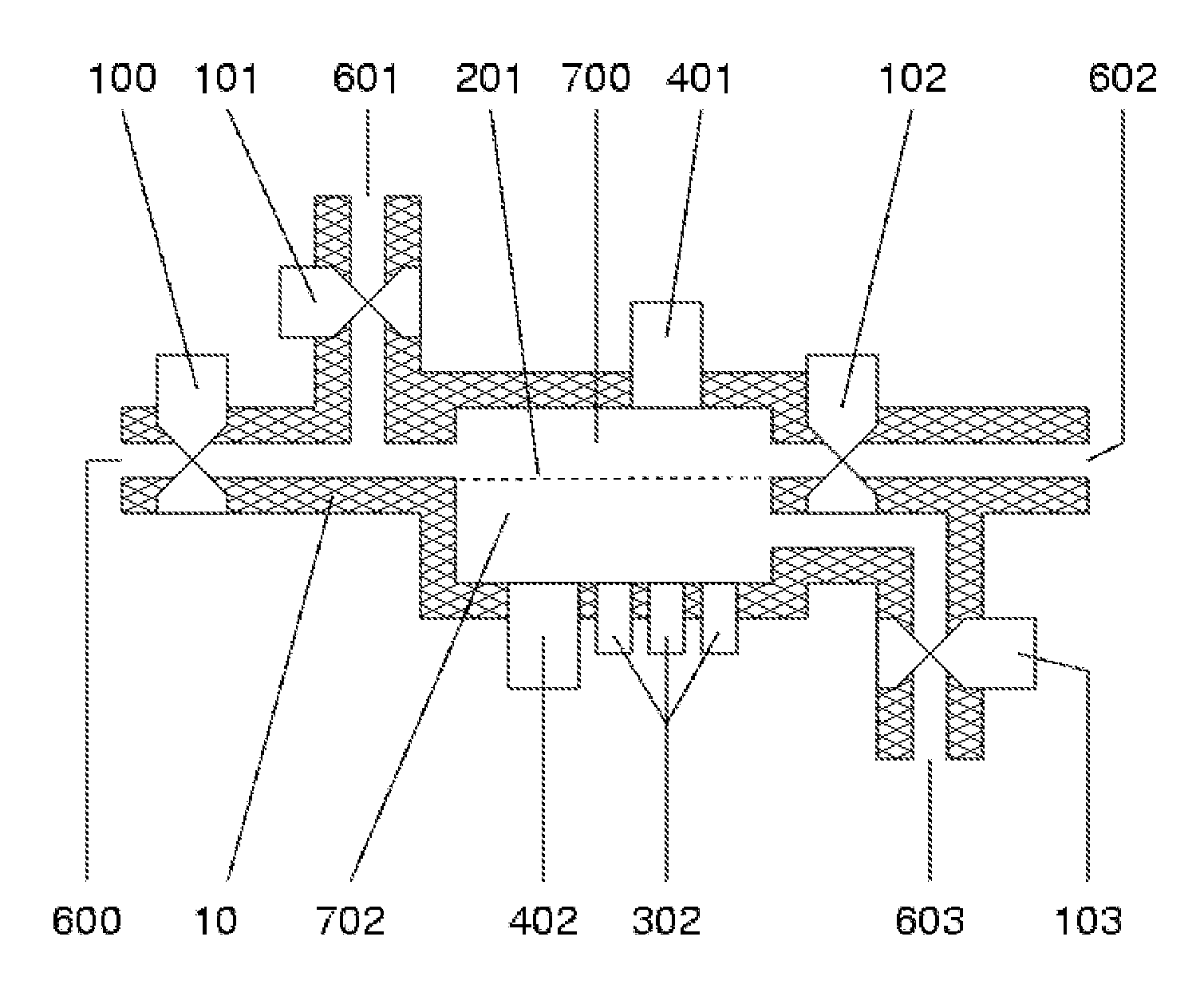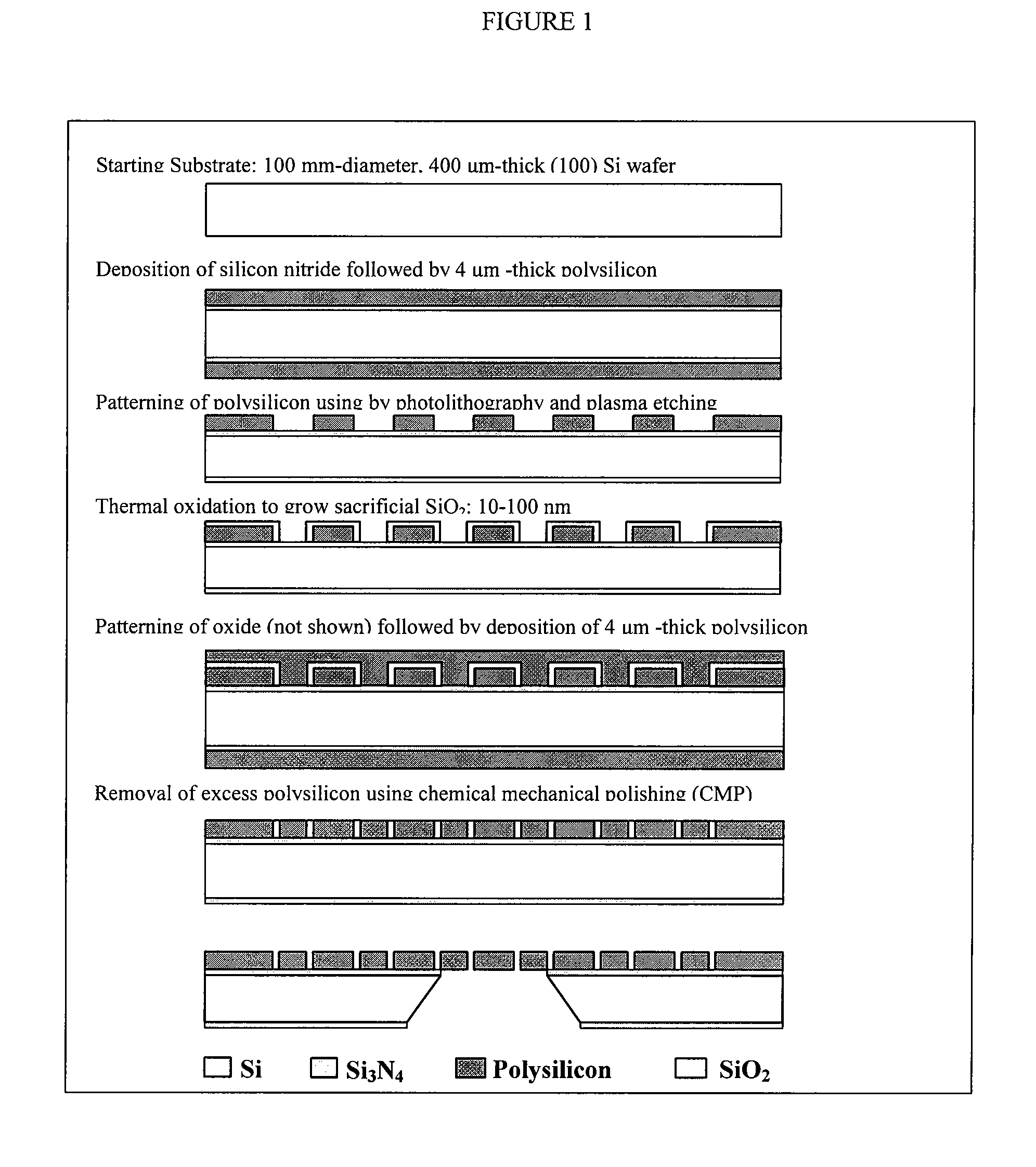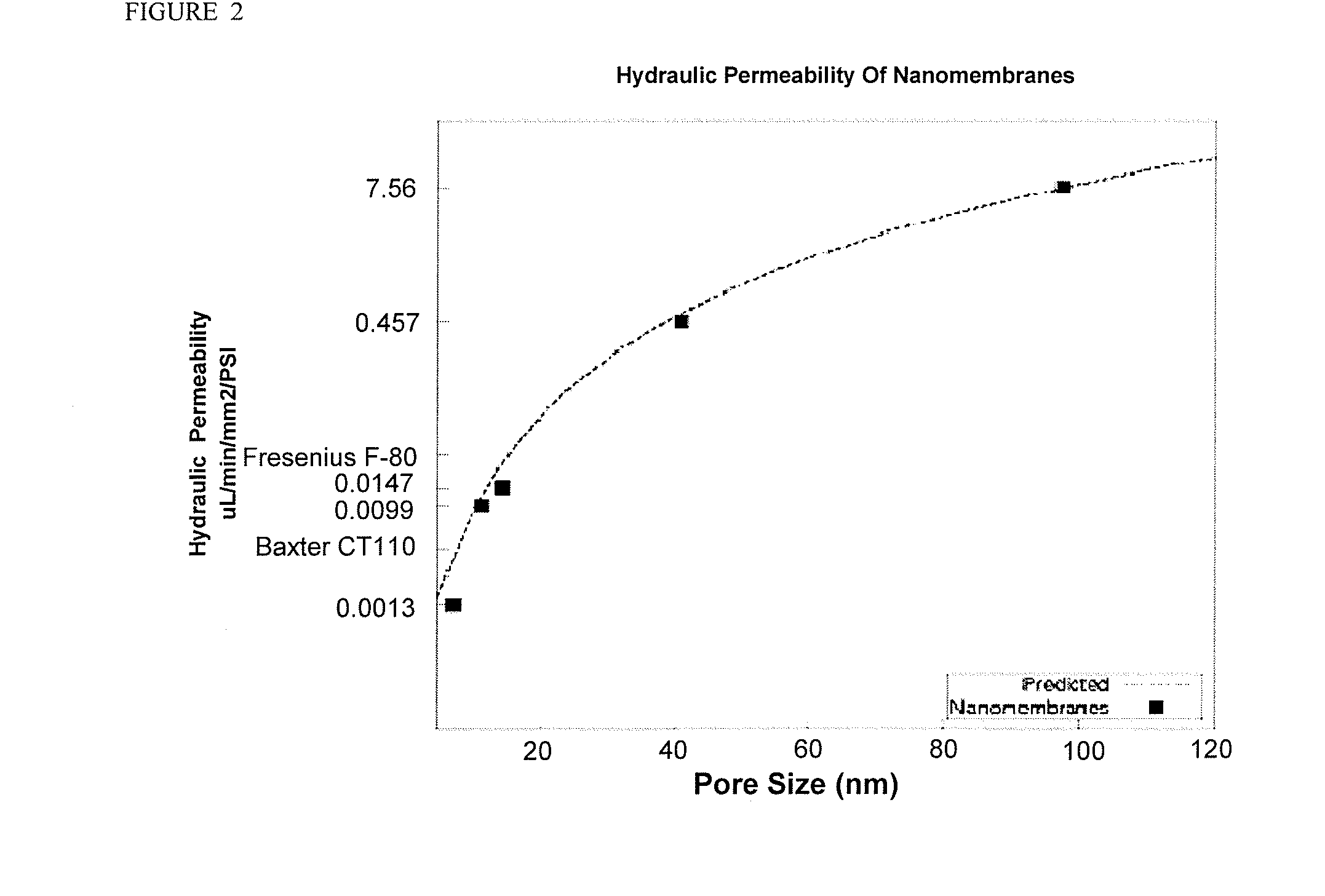Ultrafiltration Membrane, Device, Bioartificial Organ, And Related Methods
a bioartificial organ and ultrafiltration membrane technology, applied in the field of ultrafiltration, can solve the problems of severely hampered glucose measurement of electrochemical sensors
- Summary
- Abstract
- Description
- Claims
- Application Information
AI Technical Summary
Benefits of technology
Problems solved by technology
Method used
Image
Examples
example 1
Nanofabrication of Membranes
[0157]This example describes the process flow for fabrication of nanoporous membranes; this process is depicted in FIG. 1. The starting substrate is a 400 μm-thick, 100 mm-diameter, double side polished (100)-oriented silicon wafer that is obtained from a commercial vendor of semiconductor substrates. The wafer is coated with a 5000 Å-thick layer of low-stress silicon nitride (LSN) by low-pressure chemical vapor deposition (LPCVD). Next, a 4 μm-thick film of polysilicon is deposited by LPCVD (FIG. 1(a)) and followed by thermal oxidation to grow a 2500 Å-thick layer of SiO2. The oxide layer on the wafer front side is then patterned by photolithography and wet etching in buffered hydrofluoric acid (BHF) to create an etch mask, which is used to pattern the underlying polysilicon film by reactive ion etching (RIE) in chlorine plasma. Afterwards, BHF is used to remove the masking oxide on both wafer front and back sides and followed by RIE to remove polysilico...
example 2
[0159]This example demonstrates how a nanofabricated nanoporous membrane may be used to form an extracorporeal hemofiltration device (see e.g., FIG. 3). Blood from a patient or from a stored supply is directed to an orifice 600 by means of a cannula, catheter or other means. An optional pump 100, which may be peristaltic, rotary, roller, or other, is used to regulate a flow of blood to a chamber 700, which contains a pressure sensor 401 and is bounded by a membrane 201 composed of a plurality of pores. Said pores may be shaped to optimize hydraulic permeability, and may be all alike or dissimilar. Furthermore, said pores may contain or comprise electrodes, surface treatments, or be coated with chemicals, polymers, proteins, sugars, and the like to impart a particular electrostatic charge to the pore or a region around the pore, and impart an electric field within the pore. Blood exits the chamber 701 via an orifice 602 with an optional pump 102 which may...
example 3
Continuous Blood Glucose Sensor
[0160]This example demonstrates how a membrane may be used to form a continuous blood glucose sensor. The novelty and advantage of this approach is the rapidity with which the glucose level in the blood is transmitted to the sensor, as glucose is carried by convection to the sensor, rather than by diffusion towards the sensor, while still affording the sensor protection from elements in the blood that may be injurious to or degrade the sensor. The example of a blood glucose sensor is not to be construed as limiting the application; it may be applied to the analysis of cell and / or protein free fluids for arbitrary analytes by arbitrary means. A preferred embodiment is illustrated in FIG. 4. Blood from the patient is directed by means of a cannula, a vascular anastamosis, a synthetic graft, or other means to an inlet 600 optionally equipped with a pump or valve or other flow controller 100 to a chamber 700, which optionally contains a pressure sensor 401...
PUM
| Property | Measurement | Unit |
|---|---|---|
| Length | aaaaa | aaaaa |
| Length | aaaaa | aaaaa |
| Width | aaaaa | aaaaa |
Abstract
Description
Claims
Application Information
 Login to View More
Login to View More - R&D
- Intellectual Property
- Life Sciences
- Materials
- Tech Scout
- Unparalleled Data Quality
- Higher Quality Content
- 60% Fewer Hallucinations
Browse by: Latest US Patents, China's latest patents, Technical Efficacy Thesaurus, Application Domain, Technology Topic, Popular Technical Reports.
© 2025 PatSnap. All rights reserved.Legal|Privacy policy|Modern Slavery Act Transparency Statement|Sitemap|About US| Contact US: help@patsnap.com



